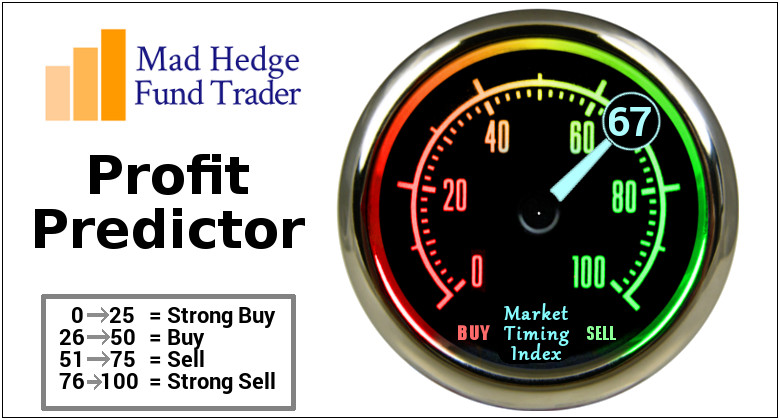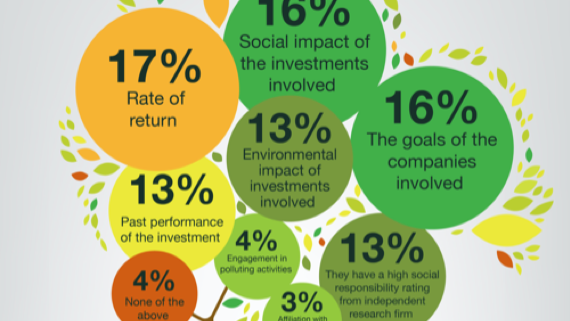Global Market Comments
January 18, 2021
Fiat LuxFeatured Trade:
(MARKET OUTLOOK FOR THE WEEK AHEAD, or WHAT WOULD KILL THIS MARKET?)
($INDU), (TLT), (TBT), (GLD), (GOLD), (WPM), (TESLA)
With the Dow Average now up 13,300 points, or 73.89%, since April, I’m getting besieged by questions from readers as to what could make the market go down. This is, after all, the sharpest move up in stocks in history.
With $20 trillion about to hit the US economy, $10 trillion in stimulus, $10 trillion in quantitative easing, and overnight interest rates remaining at zero for three years, there’s not much.
Still, even the most Teflon of bull markets eventually go down. Let’s explore the reasons why. I’m not intending to give you sleepless nights. But the best traders always believe that anything can happen to markets all the time.
1) The Pandemic Ends – If Covid-19 can take the market up 13,300 points in nine months, its disappearance may take it down. That’s because the all-clear on the disease may prompt investors to pull money out of stocks and put it in the real economy.
A lot of people are buying stocks because there is nothing else to do and you can execute trades in the safety of your own home without going outside. Still, this effect may be muted as there are at least 2 million fewer businesses today than before the pandemic.
2) Interest Rates Rise – The Fed has promised not to raise overnight rates for three years, or until the inflation rates top 2% for at least a year (it’s now 0.4%). That seems to give the most aggressive investors a green light for the foreseeable future.
However, the Fed has no control over long term rates, which are set by the bond market. Since January 1, the yield on the ten-year US Treasury bond has soared from 0.90% to an eye-popping $1.20%, and 1.50% is certainly within reach during the first half.
The markets could easily handle that. But if the ten-year yield jumps to 3.0%, which it could do in two years, stocks could suffer, especially if we are at much higher levels by then.
3) Stocks Go Down – A lot of new traders are buying stocks simply because they are going up, independent of the thought process. What if stocks go down? Scads of you are now promising to buy on the next 10% pullback. I guarantee you that when we ARE down 10%, the only thing on your mind will be selling. That’s the way it always works. Loss of upside momentum could easily turn into vicious downside momentum.
4) The Pandemic Gets a Lot Worse – The Teflon market (which was invented during the Manhattan Project to prevent the corrosion of the insides of steel pipes by uranium or plutonium) has matched rising share prices with increasing Corona deaths tic for tic since March. We are now at 4,000 deaths a day and many hospitals now have fleets of freezer trucks parked outside because they can’t bury the bodies fast enough.
Government health officials tell us the pandemic is peaking right now. What if they are wrong? What if in the coming months, deaths top 10,000 a day? That would definitely be worth a 10% correction, if not a 20% one.
Summary
It all sets up a continuing run for stocks that could last at least two years and take the Dow as high at 45,000, or up 50% from here.
Which leads me to a different subject.
What if I am wrong?
I know that many of you have invested in two-year call options (LEAPS, or long term equity participation securities) at the March-May bottom and are sitting on the biggest profits in your life. Lots of these are several thousand percent in the money and have turned into 10X leveraged long equity positions, essentially synthetic futures. As a result, you now have no downside protection whatsoever.
If you bought the 2022 $120-$130 call spread at $20, it is now worth $765, a gain of 38.25X, or 3,825%. You have essentially just won the lottery.
This is what you need to do right now: roll up your strikes.
I shall explain.
Let’s say that when Tesla was at $80 on a split-adjusted basis, I begged many of you to buy the 2022 $120-$130 call spread. Tesla shares then rose by a mind-boggling 1,006%.
Here’s what you do. Sell your 2022 $120-$130 call spread immediately. Lock in the profit. Then buy a 2023 $900-$950 call spread. If Tesla falls, it will be at a much slower rate than your existing position.
Long-dated out-of-the-money options fall at a much slower rate than stocks because they have immense time value. They demonstrate a downside “hockey stick” effect. Very roughly speaking and without doing any math, a 50% drop in the stock will deliver only a 25% drop in the options. However, if Tesla shares rise, you will still participate in the upside and get 95% of the gain.
It’s a classic “heads I win, tails you lose” set up.
This is what professional traders do automatically, without thinking about it as if it were second nature.
I just thought you’d like to know.
About Last Week
A second insurrection is in play for January 20 according to the FBI, with armed demonstrations planned in the capitols of all 50 states. Don’t plan on traveling that day. Public access to the capitol building has ceased for the foreseeable future. Washington is now an armed camp, with 25,000 National Guard called in. The FBI is attempting to arrest the ring leaders as fast as possible. Market will keep seeing this as a buying opportunity, the fires under the market are burning so hot.
The US budget deficit soared to $573 billion in Q4, up 61% YOY. For the full calendar year, the deficit reached a mind-boggling $3.3 trillion, triple the previous year. Almost all the increase went to spending on pandemic related benefits. It’s another nail in the coffin for the bond market. Keep selling the (TLT), even on small rallies. This could be the trade of the century.
The US has 3 million fewer jobs than when Trump took office four years ago. It’s the worst performance since Herbert Hoover took office in 1928. That’s exactly what I predicted back in 2016. Up to March 2020, we also had a zero return in the stock market under Trump, which only started to improve when Biden took the lead in the primaries in May. In the meantime, the National Debt soared from $20 trillion to $28 trillion and it is still soaring. Over 100% of US growth during the Trump administration has been borrowed from the future on credit. It’s not a way to run a country.
The semiconductor shortage is slowing the auto industry, with Toyota, Ford, and Fiat cutting back production. It’s a global problem. Modern cars use more than 100 chips each and are becoming more apps than hardware. I’ve been predicting this for a year, and the problem will continue as it takes billions of dollars and years to ramp up new production. Buy the daylights out of (NVDA), (AMD), and (MU).
Technology is 2% of US employment but 27% of market capitalization and 38% of profits, says my old friend Jeffrey Gundlach of Double Line. Bitcoin is a bubble, inflation will be 3% by June, and bonds (TLT) are beyond terrible. Stocks are expensive but could run for a long time.
Weekly Jobless Claims delivered a horrific print, up 181,000 to 965,000, the worst since the spring. Covid-19 is clearly the reason. Stocks could care less and pushed on to new all-time highs, up eight days in a row. It really is a “Look Through” market.
No rate hike until 2% inflation for a year, said Fed Governor Clarida. It could be a long wait as indicated by the recent 0.4% report.
US air travel is down 61% in November YOY, and that includes the big Thanksgiving travel bump. A trend up will start later this year, but airlines will still emerge from the pandemic with tons of debt. Avoid.
Netflix is launching a movie a day, for all of 2021. It’s disrupting legacy Hollywood at Internet speed, which Covid-19 has brought to a screeching halt. The stock has seen a sideways correction since tech peaked in sideways. Buy at the bottom end of the recent range.
When we come out the other side of pandemic, we will be perfectly poised to launch into my new American Golden Age, or the next Roaring Twenties. With interest rates still at zero, oil cheap, there will be no reason not to. The Dow Average will rise by 400% to 120,000 or more in the coming decade. The American coming out the other side of the pandemic will be far more efficient and profitable than the old. Dow 120,000 here we come!
My Mad Hedge Global Trading Dispatch shot out of the gate with an immediate 6.25% profit for the first ten trading days of the year. That is net of a 4% loss on a Tesla short which I added one day too soon. I went pedal to the metal immediately, again going 100% invested with a 50% long/50% short market-neutral portfolio.
That brings my eleven-year total return to 428.80% double the S&P 500 over the same period. My 11-year average annualized return now stands at a nosebleed new high of 38.63%, a new high. My trailing one-year return exploded to 72.34%, the highest in the 13-year history of the Mad Hedge Fund Trader. We have earned 90% since the March low.
I did bail on my precious metals positions on (GOLD), (NEM), and (WPM) for small profits. The metals hate rising interest rates and competition from Bitcoin. They have effectively gone into a long bond, short Bitcoin position and I am not interested in either.
The coming week will be a slow one on the data front with Q4 earnings reports coming out daily.
We also need to keep an eye on the number of US Coronavirus cases at 24 million and deaths at 400,000, which you can find here. We are now running at a staggering 4,000 deaths a day.
When the market starts to focus on this, we may have a problem.
On Monday, January 18 at 11:00 AM EST, the US Markets will be closed for Martin Luther King Day.
On Tuesday, January 19 at 4:30 PM, Bank of America (BAC), Goldman Sachs (GS), and Netflix (NFLX) report.
On Wednesday, January 20 at 10:00 AM, we get the NAHB Housing Market Index. Morgan Stanley (MS) and Proctor and Gamble (PG) report.
On Thursday, January 21 at 8:30 AM, December Housing Starts are printed. Intel (INTC) and Union Pacific (UNP) report.
On Friday, January 22 at 10:00 AM, Existing Home Sales for December are out. Schlumberger (SLB) reports. At 2:00 PM, we learn the Baker-Hughes Rig Count.
As for me, I’m still waiting for orders on where to report for my Pfizer Covid-19 vaccination. In the meantime, since I will still be locked up for months to come, I have been viewing precious old pictures and videos from my past travel extravaganzas.
In 2019, I took my girls around the world via New Zealand, Sydney, Brisbane, Melbourne, Perth, Manila, New Delhi, Dubai, Cairo, Athens, Venice, Budapest, Brussels, Zermatt, and then back to San Francisco. We don’t do anything small in my family. Click here for the link to my favorite video of us arriving in Venice.
Stay healthy.
John Thomas
CEO & Publisher
The Diary of a Mad Hedge Fund Trader


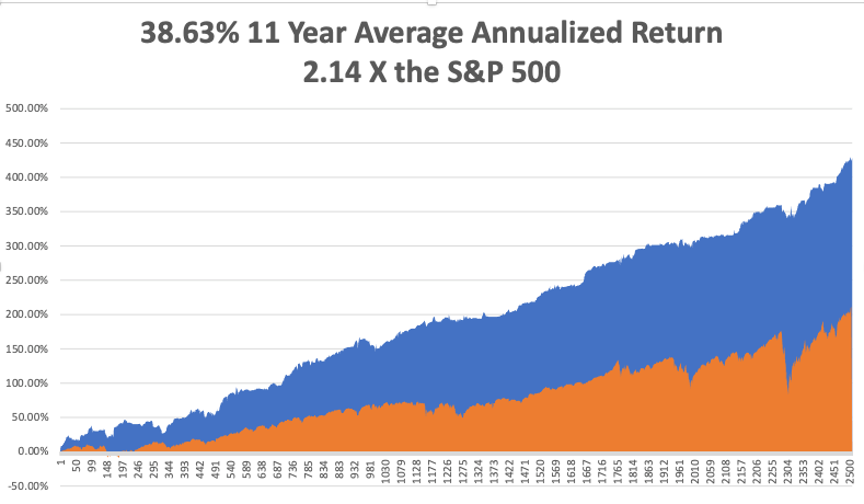
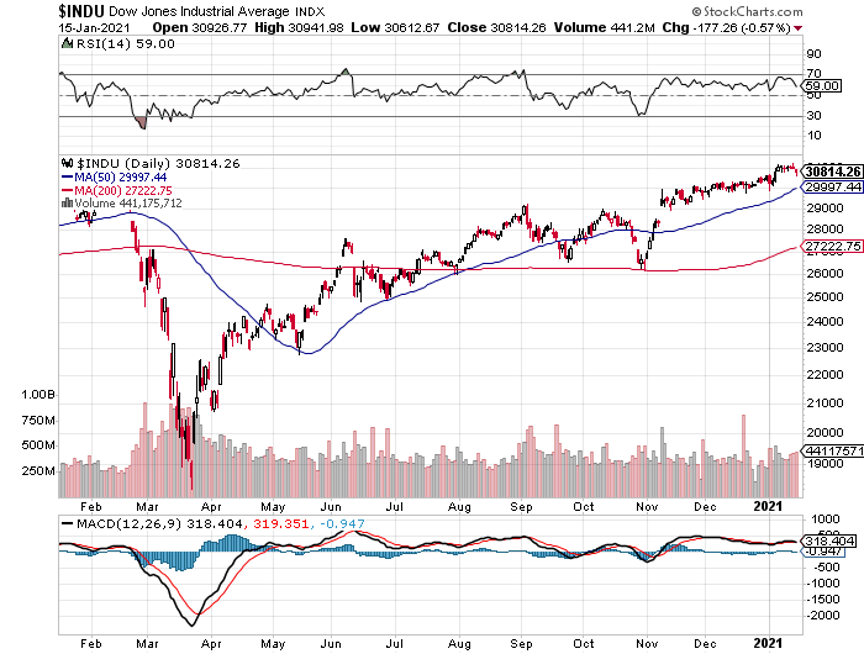


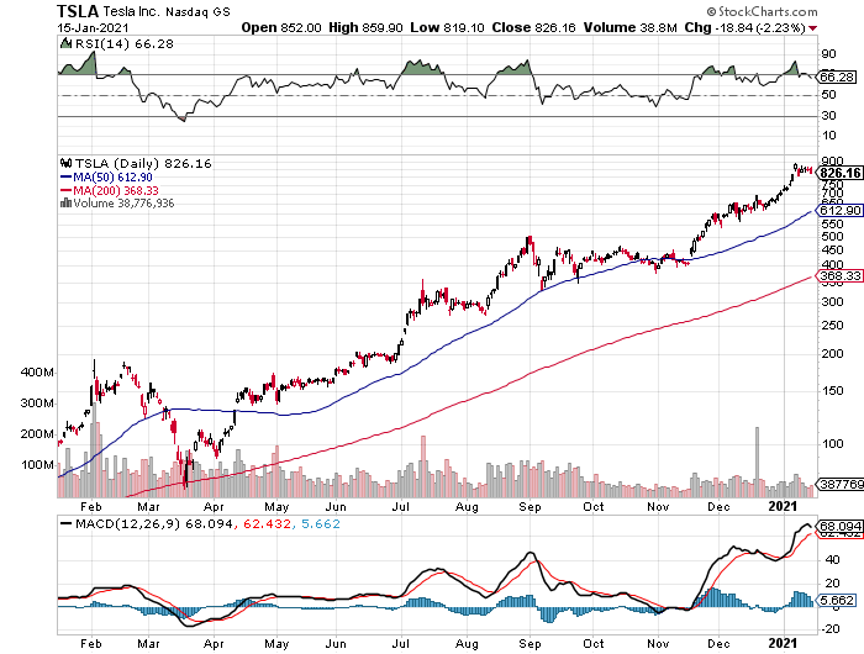

“You don’t want to invest based on a political prism,” said Oracle of Omaha Warren Buffet.

Global Market Comments
January 15, 2021
Fiat LuxFeatured Trade:
(BETTER BATTERIES HAVE BECOME BIG DISRUPTERS)
(TSLA), (XOM), (USO)
Global Market Comments
January 14, 2021
Fiat LuxFeatured Trade:
(WHAT THE HECK IS ESG INVESTING?),
(TSLA), (MO)
Looking at the New Year equity allocations, it’s truly astonishing how much money is pouring into ESG investing. Maybe it was another year of blistering head worldwide that did it. It now accounts for one-third of all US equity investment.
Last year, BlackRock, one of the largest fund managers in the country, made a major new commitment to ESG investment by rolling out several new ETFs. I thought I’d better take him seriously, as his firm is one of the largest money managers in the world with $7 trillion in assets.
So what the heck is ESG investing?
Environmental, Social, and Governance investing (ESG) seeks to address climate change in any way, shape, or form possible. Its goal is to move the economy and capital away from carbon-based energy forms, like oil (USO), natural gas (UNG), and coal (KOL), to any kind of alternative.
I am always suspicious of investment themes that are politically correct and ideologically directed, as they usually end in tears. I can’t tell you how many people I know who invested their life savings in solar companies to save the world, like Solyndra, Sungevity, American Solar Direct, and Suniva, only to get wiped out when they went under.
As laudable as the goals of these companies may have been, they were unable to deal with collapsing prices, Chinese dumping, and the harsh realities of doing business in a cutthroat competitive world.
As a venture capital friend of mine once told me, “Technology is a bakery business”. If you can’t sell your products immediately, you go broke. Technology always drops prices dramatically and if you can’t stay ahead of the curve you don’t stand a chance.
Still, what I believe is not important. The fastest growing group of new investors in the market today are Millennials, and they happen to take ESG investing very seriously.
There does seem to be a method to BlackRock’s madness. Over the past year, ESG-influenced funds have grown from 1% to 3.6% of total investment. Other major fund families like Vanguard have already jumped on the bandwagon.
ESG can include a panoply of activities, including recycling, climate change mitigation, carbon footprint reduction, water purification, green infrastructure, environmental benefits for employees, and greenhouse gas reduction. There are many more.
There is even an ESG rating system for funds and companies produced by firms like Refinitiv, which scores 7,000 companies around the world based on their environmental sensitivity. Companies like United Utilities Group PLC, the UK’s largest water company, get an A+, while China’s Guangdong Investment Ltd, which supplies water and energy to Hong Kong, gets a D-.
It goes without saying that companies from emerging nations tend to score very poorly. So do manufacturing companies relative to service ones, and energy companies versus non-energy ones.
The ESG concept began in 2005, when UN Secretary General Kofi Annan wrote to 50 global CEOs urging them to take climate change seriously. A major report by Ivor Knoepfel followed a year later entitled “Who Cares Wins.” The report made the case that embedding environmental, social and governance factors in capital markets makes good business sense and leads to more sustainable markets and better outcomes for societies. The snowball has been rolling ever since.
Themed investing is not new. “Sin” stocks have long been investment pariahs, including alcohol and tobacco companies. As a result, these companies trade at permanently low multiples. The newest investment ban is on firearms-related companies.
ESG investment may be about to get a major tailwind. The laws of supply and demand have oil prices disappearing up their own exhaust pipe. Overproduction by US fracking companies has caused supply gluts that will lead to chronically lower prices. The US happens to have a new 200-year supply of oil and gas, thanks to the fracking revolution.
Saudi Arabia just floated their oil monopoly, Saudi ARAMCO, raising a record $26 billion. When Saudi Arabia wants to get out of the oil and gas business, so should you. It’s not because they can’t think of new ways to spending money that they’re unloading it.
That’s why I have been advising followers to avoid energy investments like the plague for the past decade. My recent trade alerts for oil have been on the short side. It’s just a matter of time before alternatives rule the world.
Who is the greenest company in America? That would be electric car and autonomous driving firm Tesla (TSLA). Perhaps ESG investing helps explain the tripling of the share price since June.
What is the top-performing listed stock of the last 30 years? Tobacco company Altria Group (MO), the old Philip Morris.
It’s proof that investment shaming doesn’t always work.
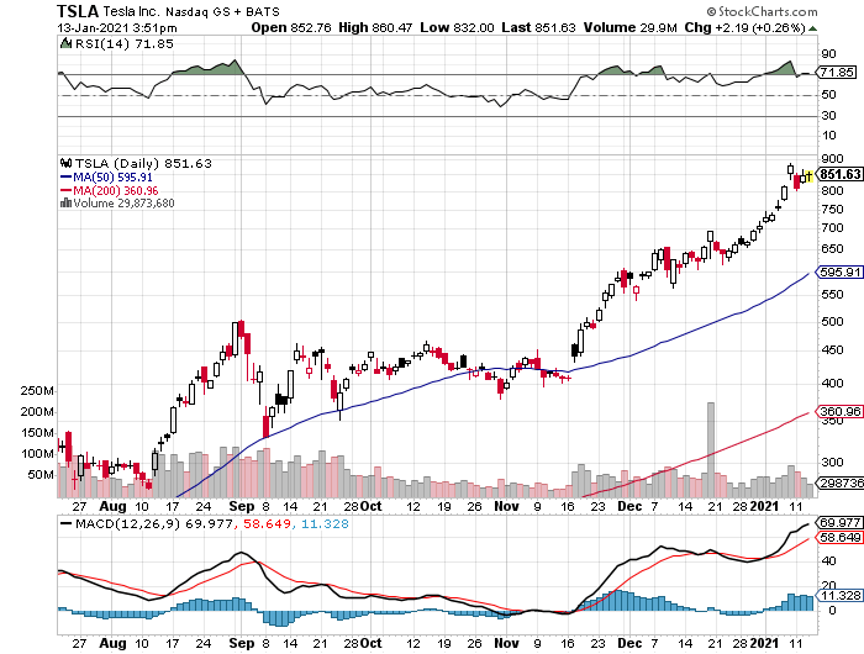
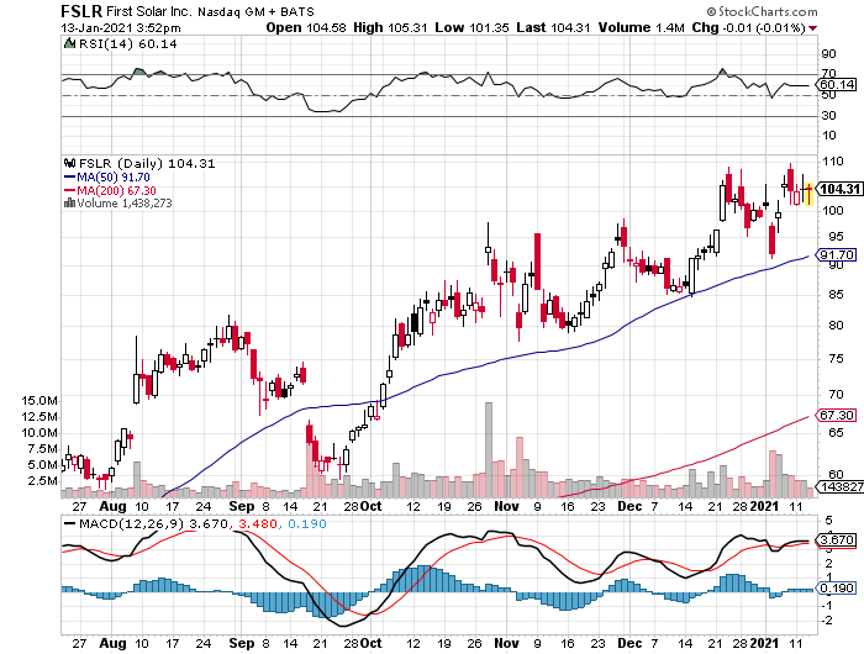
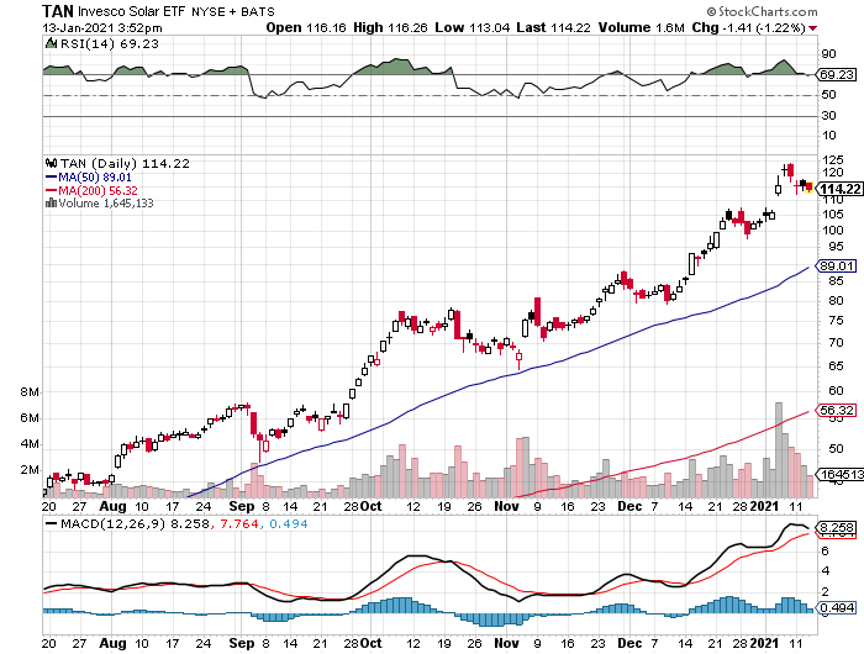
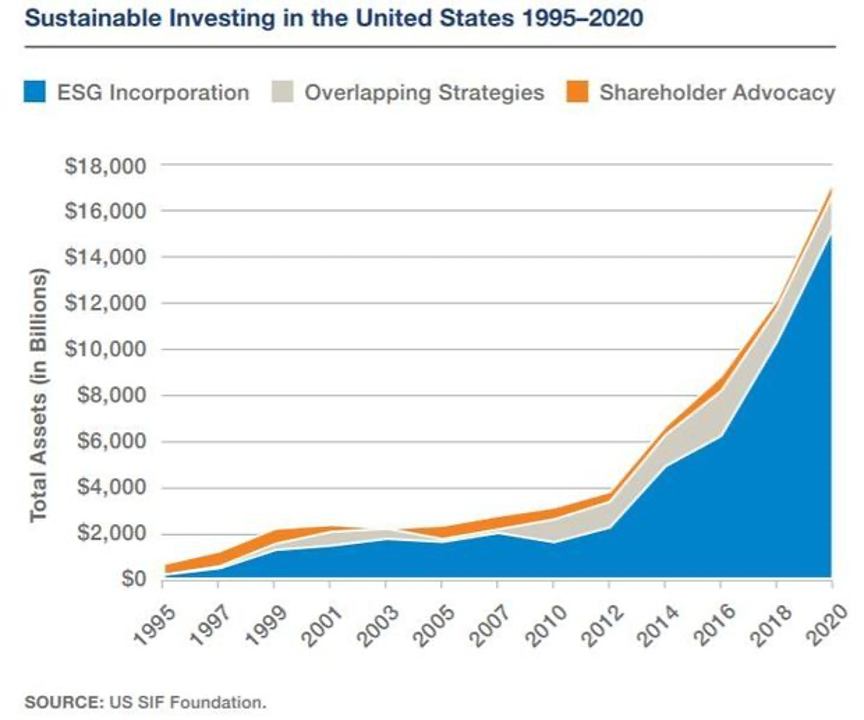
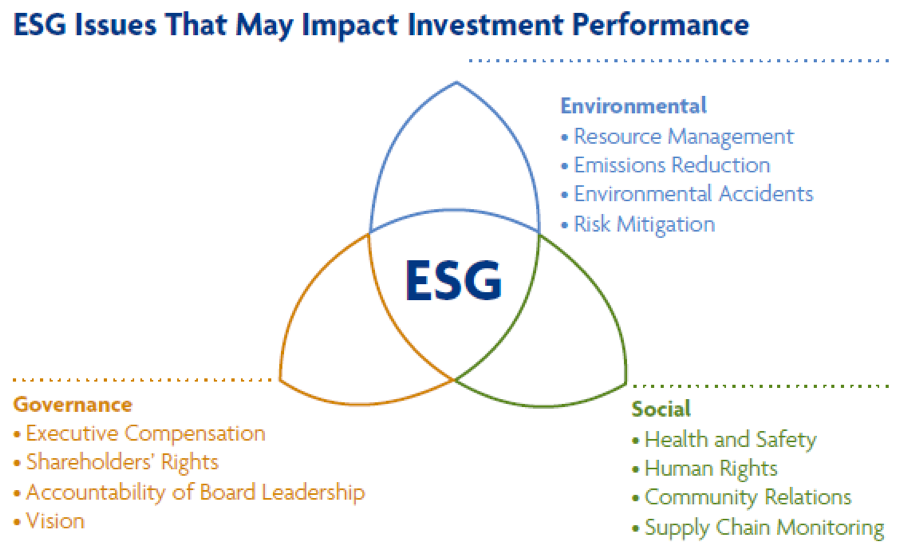
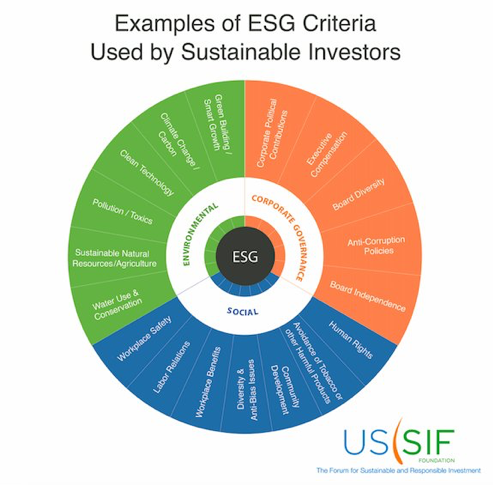
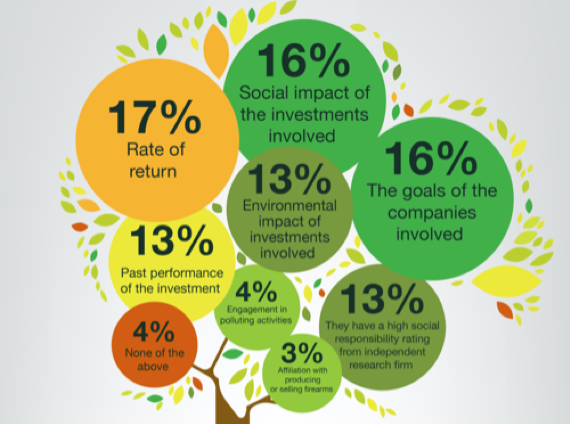

“You don’t want to invest based on a political prism,” said Oracle of Omaha Warren Buffet.

Global Market Comments
January 13, 2021
Fiat LuxFeatured Trade:
(MY RADICAL VIEW OF THE MARKETS),
(INDU), (SPY), (AAPL), (FB), (AMZN), (ROKU)
What if the consensus is wrong?
What if instead of being in the 12th year of a bull market, we are actually in the first year, which has another decade to run? It’s not only possible but also probable. Personally, I give it a greater than 90% chance.
There is a possibility that the bear market that everyone and his brother have been long predicting and that the talking heads assure you is imminent has already happened.
It took place during the first quarter of 2020 when the Dow Average plunged a heart-rending 40%. How could this be a bear market when historical ursine moves down lasted anywhere from six months to two years, not six weeks?
Blame it all on hyperactive algorithms, risk parity traders, Robin Hood traders, and hedge funds, which adjust portfolios with the speed of light. If this WAS a bear market and you blinked, then you missed it.
It certainly felt like a bear market at the time. Lead stocks like Amazon (AMZN), Apple (AAPL), Facebook (FB), and Alphabet (GOOGL) were all down close to 40% during the period. High beta stocks like Roku (ROKU), one of our favorites, were down 60% at the low. It has since risen by 600%.
It got so bad that I had to disconnect my phone at night to prevent nervous fellows from calling me all night.
In my experience, if it walks like a duck and quacks like a duck, then it is a bear. If true, then the implications for all of us are enormous.
If I’m right, then my 2030 target of a Dow Average of $120,000, an increase of 300% no longer looks like the mutterings of a mad man, nor the pie in the sky dreams of a permabull. It is in fact eminently doable, calling for a 15% annual gain until then, with dividends.
What have we done over the last 11 years? How about 13.08% annually with dividends reinvested for a total 313% gain.
For a start, from here on, we should be looking to buy every dip, not sell every rally. Institutional cash levels are way too high. Markets have gone up so fast, up 12,000 Dow points in eight months, that many slower investors were left on the sideline. Most waited for dips that never came.
It all brings into play my Golden Age scenario of the 2020s, a repeat of the Roaring Twenties, which I have been predicting for the last ten years. This calls for a generation of 85 million big spending Millennials to supercharge the economy. Anything you touch will turn to gold, as they did during the 1980s, the 1950s, and well, the 1920s. Making money will be like falling off a log.
If this is the case, you should be loading the boat with technology stocks, domestic recovery stocks, and biotech stocks at every opportunity. Although stocks look expensive now, they are still only at one fifth peak valuations of the 2000 market summit.
Let me put out another radical, out of consensus idea. It has become fashionable to take the current red-hot stock market as proof of a Trump handling of the economy.
I believe the opposite is true. I think stocks have traded at a 10%-20% discount to their true earnings potential for the past four years. Anti-business policies were announced and then reversed the next day. Companies were urged to reopen money-losing factories in the US. Capital investment plans were shelved.
Yes, the cut in corporate earnings was nice, but that only had value to the 50% of S&P 500 companies that actually pay taxes.
Now that Trump is gone, that burden and that discount are lifted from the shoulders of corporate America.
It makes economic sense. We will see an immediate end to our trade war with the world, which is currently costing us 1% a year in GDP growth. Take Trump out of the picture and our economy gets that 1% back immediately, leaping from 2% to 3% growth a year and more.
The last Roaring Twenties started with doubts and hand wringing similar to what we are seeing now. Everyone then was expecting a depression in the aftermath of WWI because big-time military spending was ending.
After a year of hesitation, massive reconstruction spending in Europe and a shift from military to consumer spending won out, leading to the beginning of the Jazz Age, flappers, and bathtub gin.
I know all this because my grandmother regaled me with these tales, an inveterate flapper herself, which she often demonstrated. This is the same grandmother who bought the land under the Bellagio Hotel in Las Vegas for $500 in 1945 and then sold it for $10 million in 1978.
And you wonder where I got my seed capital.
It all sets up another “Roaring Twenties” very nicely. You will all look like geniuses.
I just thought you’d like to know.
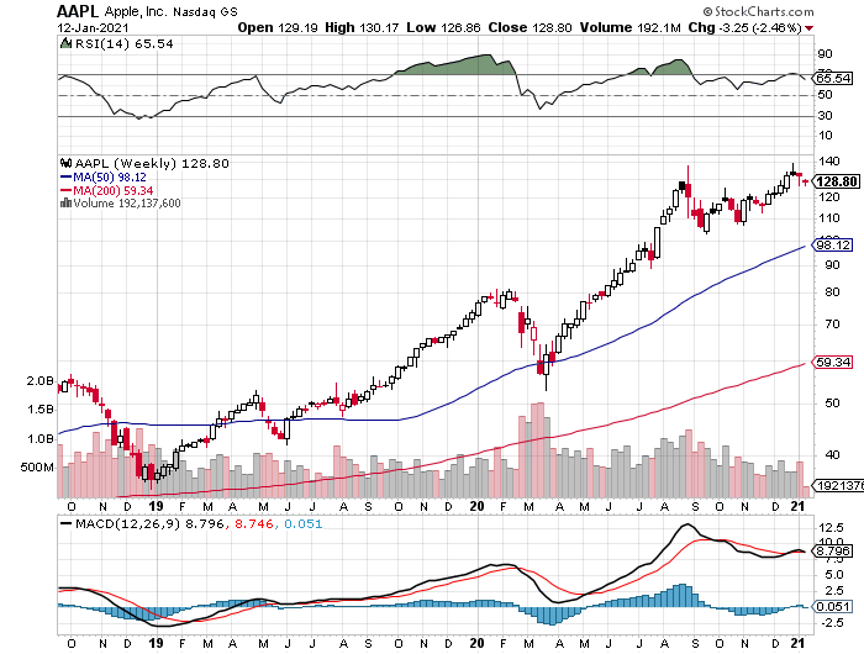
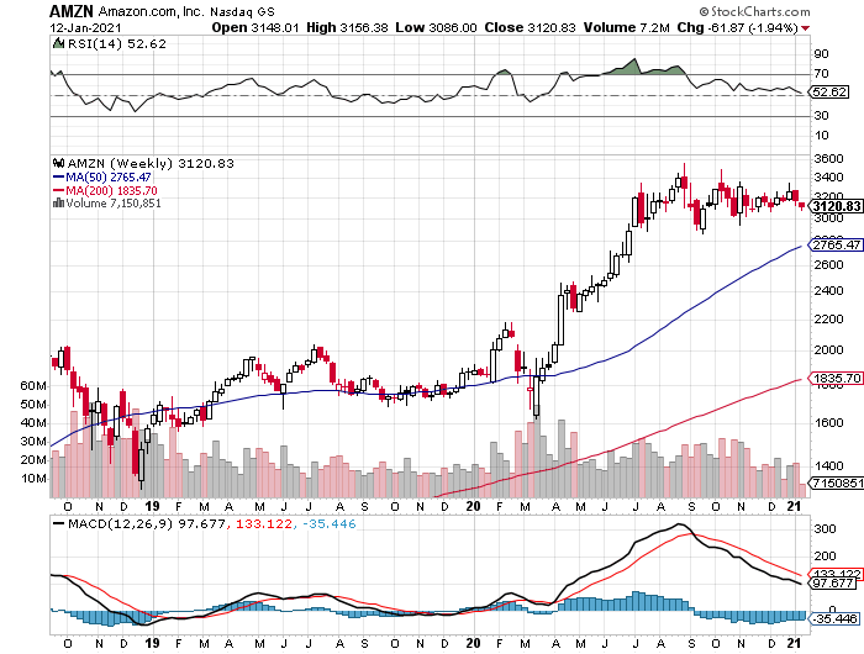
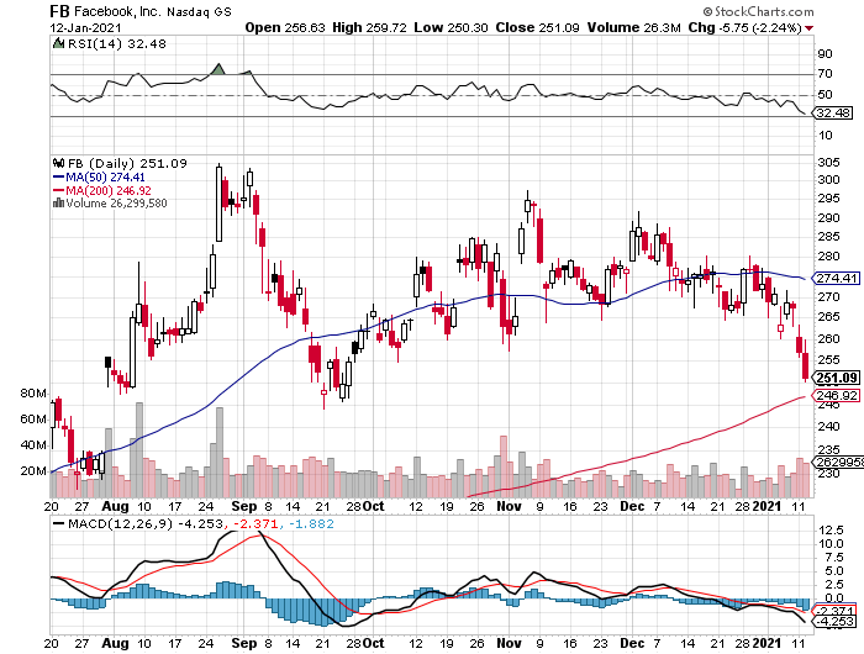
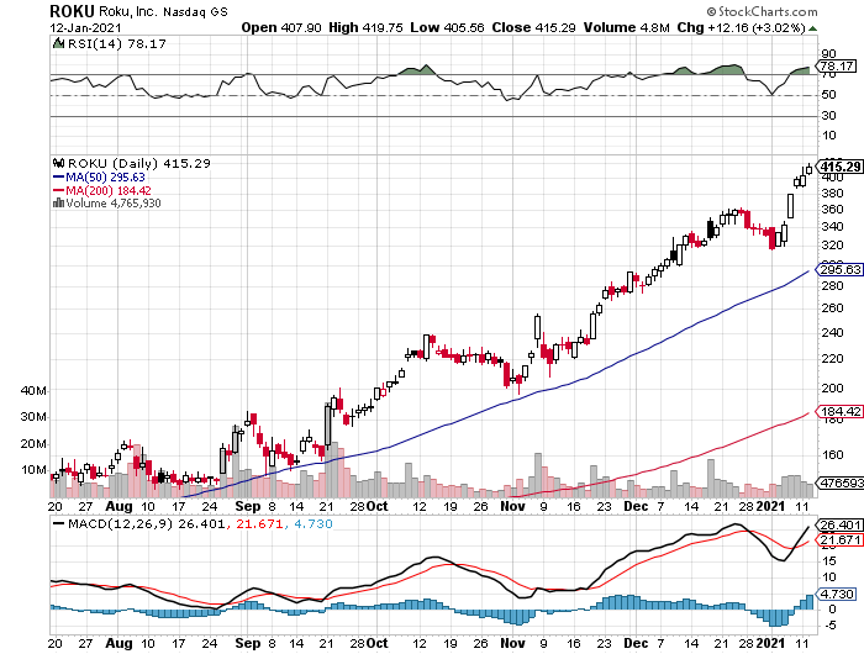

Global Market Comments
January 12, 2021
Fiat Lux
Featured Trade:
(MAD HEDGE 2020 PERFORMANCE ANALYSIS),
(SPY), (TLT), (TBT), (TSLA), (GLD),
(SLV), (V), (AAPL), (VIX), (VXX)
(TESTIMONIAL)
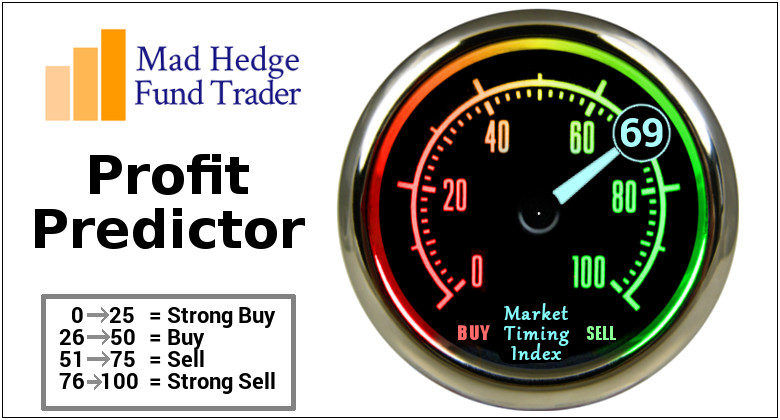
Legal Disclaimer
There is a very high degree of risk involved in trading. Past results are not indicative of future returns. MadHedgeFundTrader.com and all individuals affiliated with this site assume no responsibilities for your trading and investment results. The indicators, strategies, columns, articles and all other features are for educational purposes only and should not be construed as investment advice. Information for futures trading observations are obtained from sources believed to be reliable, but we do not warrant its completeness or accuracy, or warrant any results from the use of the information. Your use of the trading observations is entirely at your own risk and it is your sole responsibility to evaluate the accuracy, completeness and usefulness of the information. You must assess the risk of any trade with your broker and make your own independent decisions regarding any securities mentioned herein. Affiliates of MadHedgeFundTrader.com may have a position or effect transactions in the securities described herein (or options thereon) and/or otherwise employ trading strategies that may be consistent or inconsistent with the provided strategies.

